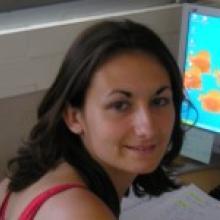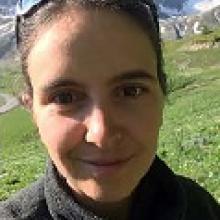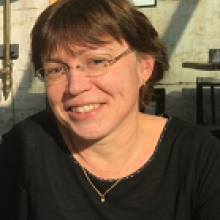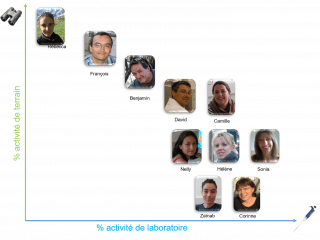Research assistance
Members

Assistante ingénieure
CNRS
Tel: 04 72 44 81 42

Ingénieure d'études
CNRS
Tel: 33 04 72 43 29 17
Technicien CDD
CNRS

Assistant ingénieur
UCBL
Adjointe technique
UCBL
Tel: 33 04 72 44 79 17

Assistant ingénieur
CNRS
Tel: 33 04 72 43 29 29

Assistante ingénieure
CNRS
Tel: 04 72 44 81 42
Stagiaire
CNRS

Ingénieure de recherche
CNRS
Tel: 33 04 72 43 29 14
Technicienne CDD
UCBL

Technicienne
UCBL
Tel: 33 04 72 43 29 15

Ingénieur d'études
CNRS
Tel: 33 04 72 44 58 72
Adjointe technique
UCBL
Tel: 04 72 44 81 42

Technicienne
CNRS
Tel: 04 72 44 81 42

Assistante ingénieure
UCBL
Tel: 04 72 43 29 14

Technicien
UCBL

Ingénieur de recherche
CNRS
Tel: 04 72 43 29 29

The “pole biotechnologique” brings together a range of bioengineering expertise for the development of tools and approaches for research in evolutionary biology; and operational competences to ensure their logistical and technical implementation.
Since it was set up, the biotechnology hub has perpetuated insect breeding activities, including several species of drosophila, but also Venturia and Bemisia for example. These breeding activities are carried out on artificial medium or plants. We ensure laboratory logistics (e.g. autoclave, stock management, ...) as well as safety aspects, and develop devices (e.g. via 3D printing) to feed experimental research in the laboratory focusing on evolutionary genomics, behavioural ecology and functional ecology.
Our expertise is also solicited to organize field work, in metropolitan France and internationally, and to carry out population monitoring of terrestrial mammals (e.g. roe deer, marmots, feral cats, bats) and birds (dipper). In addition to capture (e.g. trapping, netting), marking and monitoring of animals, we implement experimental approaches in natura, collect biometric, behavioral and physiological data, biological samples (blood, secretions, hair, faeces, biopsy, ...) and characterize the study environments (installation of sensors, aerial imaging by drones, construction of digital models of terrain ...).
Finally, the biotechnology hub offers the technical resources and skills to analyse a wide variety of biological samples in the laboratory through an multidisciplinary prism. The complementarity and synergy of our competences are expressed in the fields of molecular biology (PCR, qPCR, construction of libraries for the genesis of ohmic data), cell biology (confocal microscopy, flow cytometry), and biochemistry (characterization of metabolic, endocrine and oxidative profiles).
Rehabilitation work was done at the LBBE in 2022 and lead to a significant expansion of the experimental space. These new premises allow us to increase our capacity, to offer new spaces and modern tools dedicated to behavioral approaches. These new premises also allow us to widen the spectrum of our activities by developing new techniques (e.g. cell culture, Crispr/cas9, RNAi, ...).
In all our activities, we regularly welcome and supervise trainees and students of all levels. For any questions or information request, do not hesitate to contact us
Publications
Display of 211 to 240 publications on 259 in total
A new case of Wolbachia dependence in the genus Asobara: evidence for parthenogenesis induction in Asobara japonica
Heredity . 103 ( 3 ) : 248-256
DOI: 10.1038/hdy.2009.63
Journal article
see the publicationGenomic environment influences the dynamics of the tirant LTR retrotransposon in Drosophila.
FASEB Journal . 23 ( 5 ) : 1482-9
DOI: 10.1096/fj.08-123513
Journal article
see the publicationMolecular Detection Penetrance and Transmission of an Inherited Virus Responsible for Behavioral Manipulation of an Insect Parasitoid
Applied and Environmental Microbiology . 75 ( 3 ) : 703-710
DOI: 10.1128/AEM.01778-08
Journal article
see the publicationInteractions between Coexisting Intracellular Genomes: Mitochondrial Density and Wolbachia Infection
Applied and Environmental Microbiology . 75(7) : 1916-1921
Journal article
see the publicationWhat shapes intra-specific variation in home range size? A case study of female roe deer
Oikos . 118 : 1299-1306
Journal article
see the publicationMitochondrial adaptations to steatohepatitis induced by a methionine- and choline-deficient diet
AJP - Endocrinology and Metabolism . 294 ( (1) ) : E110-E119
Journal article
see the publicationReptilian uncoupling protein: functionality and expression in sub-zero temperatures
Journal of Experimental Biology . 211 : 1456-1462
Journal article
see the publicationRecovery from swimming-induced hypothermia in king penguins: effects of nutritional condition.
Physiological and Biochemical Zoology . 81 ( 4 ) : 434-441
DOI: 10.1086/589546
Journal article
see the publicationRecovery of king penguins from swimming induced hypothermia: effects of nutritional condition
Physiological and Biochemical Zoology . 81 : 434-441
Journal article
see the publicationMitochondrial adaptations to steatohepatitis induced by a methionine- and choline-deficient diet
AJP - Endocrinology and Metabolism . 294 : 110-119
Journal article
see the publicationLong-term fasting decreases mitochondrial avian UCP-mediated oxygen consumption in hypometabolic king penguins
American Journal of Physiology - Regulatory, Integrative and Comparative Physiology . 295 : R92-R100
Journal article
see the publicationGrowing in Antarctica a challenge for white adipose tissue development in Adélie penguin chicks (Pygoscelis adeliae)
American Journal of Physiology - Regulatory, Integrative and Comparative Physiology . 295 : 1671-1679
Journal article
see the publicationSpatial ordination of vegetation data using a generalization of Wartenberg's multivariate spatial correlation
Journal of Vegetation Science . 19 : 45-56
Journal article
see the publicationGrowing in Antarctica, a challenge for white adipose tissue development in Adelie penguin chicks (Pygoscelis adeliae).
American Journal of Physiology - Regulatory, Integrative and Comparative Physiology . 295 ( 5 ) : R1671-9
Journal article
see the publicationBehavioural manipulation of insect parasitoids by a maternally inherited virus: ecological consequences and potential applications for biological control
Entomological Research . 37 : A11-A73
Journal article
see the publicationA Survey of the Bacteriophage WO in the Endosymbiotic Bacteria Wolbachia
Molecular Biology and Evolution . 24 : 427-435
Journal article
see the publicationInteraction between host genotype and environmental conditions affects bacterial density in Wolbachia symbiosis
Biology Letters . 3 : 210-213
Journal article
see the publicationEffect of temperature on Wolbachia density and impact on cytoplasmic incompatibility
Parasitology . 132 : 49-56
Journal article
see the publicationFat intake reverses the beneficial effects of low caloric intake on skeletal muscle mitochondrial H(2)O(2) production.
Free Radical Biology and Medicine . 39 ( 9 ) : 1249-61
Journal article
see the publicationFat intake reverses the beneficial effects of low caloric intake on skeletal muscle mitochondrial H(2)O(2) production
Free Radical Biology and Medicine . 39 : 1249-1261
Journal article
see the publicationAssessment of forage availability in ecological studies
European Journal of Wildlife Research . 51 ( 4 ) : 242-247
Journal article
see the publicationMultiple infections and diversity of cytoplasmic incompatibility in a haplodiploid species
Heredity . 94 : 187-192
Journal article
see the publicationFat intake reverses the beneficial effect of low caloric intake on skeletal muscle mitochondrial H2O2 production
Free Radical Biology and Medicine . 39 : 1249-1261
Journal article
see the publicationOrigin and neofunctionalization of a Drosophila paternal effect gene essential for zygote viability.
Current Biology . 15 ( 2 ) : 87-93
Journal article
see the publicationUncoupling protein and ATP/ADP carrier increase mitochondrial proton conductance after cold adaptation of king penguin
The Journal of Physiology . 558 : 123-135
Journal article
see the publicationMitochondrial proton conductance in cold adapted king penguins
Physiology News . 1 : 17-18
Journal article
see the publicationVirulence multiple infections and regulation of symbiotic population in the Wolbachia-Asobara tabida symbiosis
Genetics . 168 : 181-189
Journal article
see the publicationUncoupling protein and ATP/ADP carrier increase mitochondrial proton conductance after cold adaptation of king penguins
The Journal of Physiology . 558 : 123-135
Journal article
see the publicationDiversity distribution and specificity of WO phage infection in Wolbachia of four insect species
Insect Molecular Biology . 13 : 147-153
Journal article
see the publicationThe risk of hospital-acquired GB virus C infection: a pilot case-control study
Journal of Hospital Infection . 53 : 72-75
Journal article
see the publication